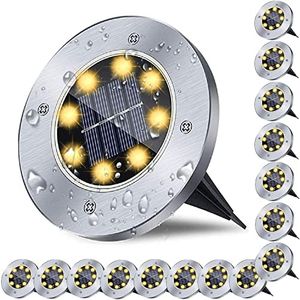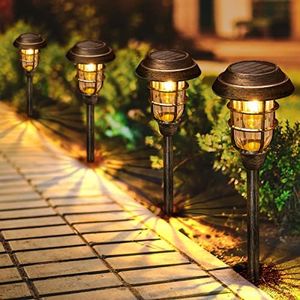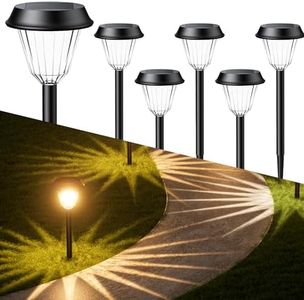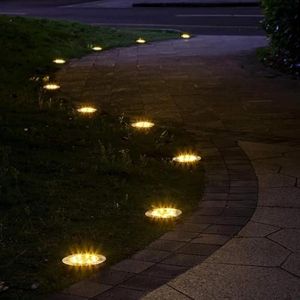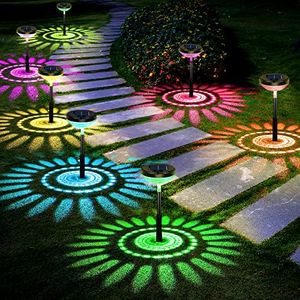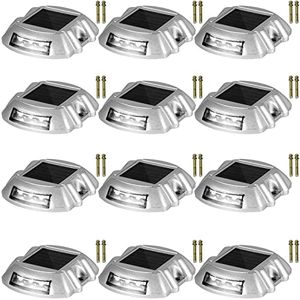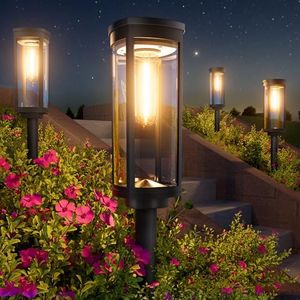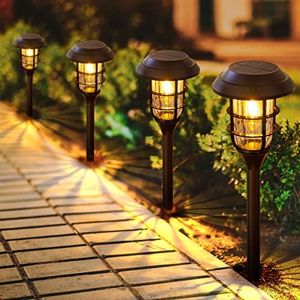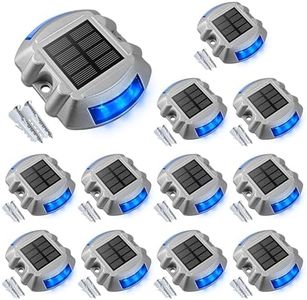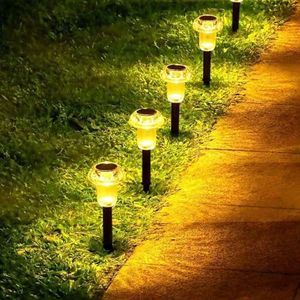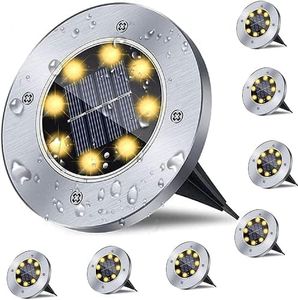We Use CookiesWe use cookies to enhance the security, performance,
functionality and for analytical and promotional activities. By continuing to browse this site you
are agreeing to our privacy policy
10 Best Solar Walkway Lights
From leading brands and best sellers available on the web.Buying Guide for the Best Solar Walkway Lights
Choosing solar walkway lights can make a big difference in how your outdoor spaces look and function at night. These lights harness energy from the sun during the day and turn on automatically at dusk, providing both safety and ambiance to paths, gardens, or driveways. When shopping, it's important to look beyond just style and price, and pay attention to certain key features to ensure the lights will work well and last in your setting.Brightness (Lumens)Brightness is measured in lumens and tells you how much light the walkway light will give off. This is important because it impacts how well the path will be illuminated at night. Low-lumen lights tend to create a soft, decorative glow, suitable for mood lighting rather than visibility, while higher-lumen lights provide a brighter and more practical illumination. If you want gentle accent lighting, look for lights around 5-20 lumens; for paths that need to be clearly visible for safety, consider 30-100 lumens or more. Think about how much light you actually need—if it’s mostly for decoration, lower brightness is fine; for security or nightly use, choose a higher lumen rating.
Battery CapacityBattery capacity determines how long the light can operate after a full charge. It's an important factor because it affects how long the walkway will stay lit through the night, especially during seasons when sunlight is limited. Battery capacities are often described in milliamp-hours (mAh). Lower capacity batteries may only last a few hours, while larger ones can last all night. If you live in a region with long nights or want light from dusk to dawn, aim for higher capacities; for decorative use only a few hours in the evening, a smaller capacity may suffice.
Solar Panel EfficiencySolar panel efficiency tells you how well the panel can turn sunlight into electrical energy. This is important for keeping the lights charged even on cloudy days or in shaded areas. Higher efficiency panels will recharge the battery faster with less sunlight, while lower efficiency panels may struggle in less-than-ideal conditions. Common efficiency segments range from basic amorphous panels (lower efficiency) to monocrystalline (highest efficiency). If the lights will be in a sunny spot all day, efficiency is less important, but for partially shaded locations or places with less direct sunlight, go for higher-efficiency panels.
Weather Resistance (IP Rating)The IP rating shows how well a light is protected against dust and water. This matters because walkway lights are exposed to rain, snow, and dirt. A higher IP rating means better protection and longer-lasting lights. For walkway lights, an IP rating of at least IP44 will protect against splashing water and general outdoor use; if you are in a region with harsh weather, consider IP65 or higher for extra protection. If you'll be placing lights in covered or mild-climate areas, lower ratings can be considered, but for exposed spots or tough environments, higher is safer.
Build MaterialThe material of the lights influences how durable and attractive they are. This is important for longevity and how well the lights match your outdoor decor. Common materials include plastic, stainless steel, and aluminum. Plastic is lightweight and affordable but may fade or crack over time; metals like stainless steel or aluminum are more weather-resistant and usually look better year after year. If you want long-term durability and a premium look, go for metal; for temporary setups or mild climates, plastic can be sufficient.
Installation TypeHow the lights are installed affects both appearance and practicality. They generally come as stake (pushed into the ground), surface mount (mounted onto deck/patio), or hanging/lantern types. Stake lights are simplest and most common for garden paths, surface mounts are suited for hardscapes like concrete walkways, and hanging types work for decorative touches. Think about your walkway’s surface and decide which type fits best—soft soil favors stakes, solid surfaces favor mounts, and for decorative flair, hanging options can work anywhere.

